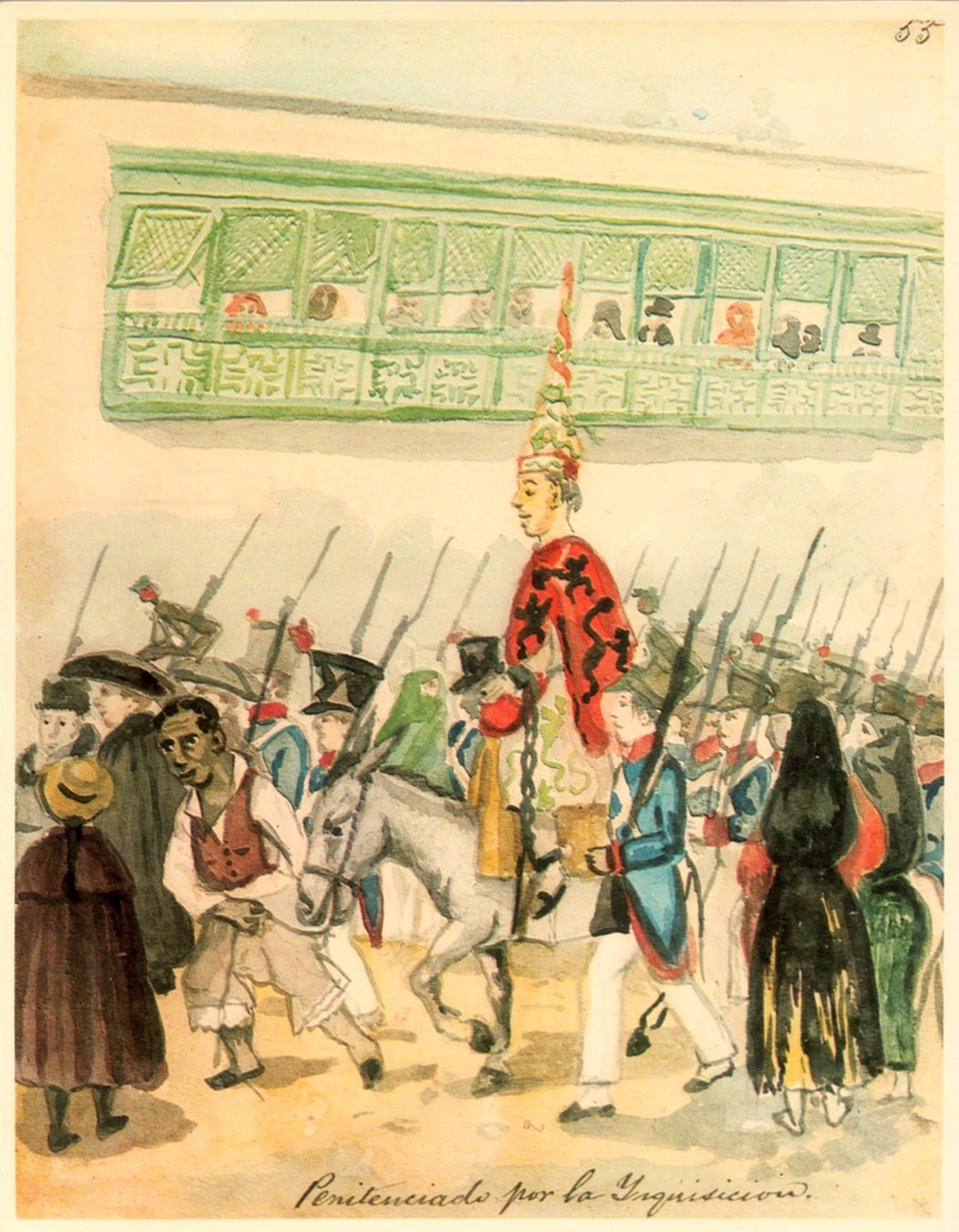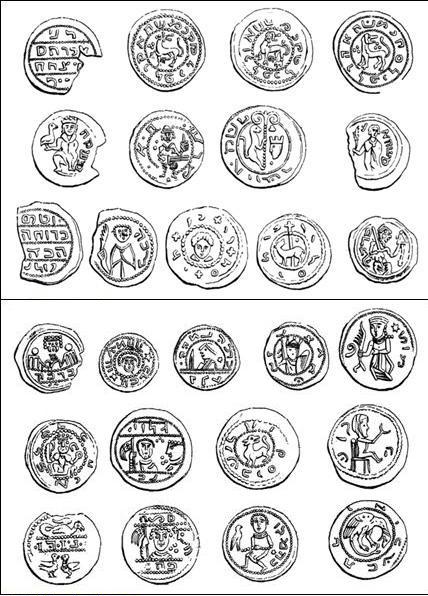|
Bolivian Jews
The history of the Jews in Bolivia stretches from the colonial period of Bolivia in the 16th century to the end of the 19th century. In the 19th century, Jewish merchants (both Sephardim and Ashkenazim) came to Bolivia, most of them taking local women as wives and founding families that merged into the mainstream Catholic society. This was often the case in the eastern regions of Santa Cruz, Tarija, Beni and Pando, where these merchants came either from Brazil or Argentina. In the colonial period, marranos from Spain settled in the country. Some worked in the silver mines in Potosi and others were among the pioneers that helped found Santa Cruz de la Sierra in 1557. A few customs still held in the region suggest possible marrano Jewish ancestry, but the only documents which exist are from the Peruvian Inquisition. During the 20th century, substantial Jewish settlement began in Bolivia. In 1905, a group of Russian Jews, followed by Argentines and later a few Sephardi familie ... [...More Info...] [...Related Items...] OR: [Wikipedia] [Google] [Baidu] |
Peruvian Inquisition
The Peruvian Inquisition was established on January 9, 1570 and ended in 1820. The Holy Office and tribunal of the Inquisition were located in Lima, the administrative center of the Viceroyalty of Peru. History Unlike the Spanish Inquisition and the Medieval Inquisition, in the Peruvian Inquisition both the authorities and the church were dependent of the Crown's approval to carry out jurisdiction. Holy Office documents show that various tests were created to identify Jews, Lutherans and Muslims, with members of those groups punished, tortured or killed for their beliefs. In 1813 it was first abolished by virtue of a Cortes decree. In 1815 it was reconstituted but their target was now the ideas from the French Encyclopédistes and similar texts, and most people who were accused of crimes were only given probation. With the promotion of Freemason José de la Serna to the viceroyship, which coincided with the rise of the nationalist faction (as both factions prepared to fight each ... [...More Info...] [...Related Items...] OR: [Wikipedia] [Google] [Baidu] |
History Of The Jews In Lithuania
The history of the Jews in Lithuania spans the period from the 14th century to the present day. There is still a small community in the country, as well as an extensive Lithuanian Jewish diaspora in Israel, the United States and other countries. Early history The origin of the Jews of Lithuania has been a subject of much speculation. The first reliable document attesting the presence of Jews in the Grand Duchy of Lithuania is the charter of 1388 granting privileges to the Jews in Trakai. The gathering together of the scattered Jewish settlers in sufficient numbers and with enough power to form communities and to obtain privileges from their Lithuanian rulers implies the lapse of considerable time from the first migrations. Therefore, various historians attempted to claim that Jews migrated to Lithuania earlier. For example, Abraham Harkavy (1835–1919) claimed that the first Jews migrated in the 10th century from the Khazar Khaganate (see also Khazar hypothesis of Ashkenazi ... [...More Info...] [...Related Items...] OR: [Wikipedia] [Google] [Baidu] |
History Of The Jews In Poland
The history of the Jews in Poland dates back at least 1,000 years. For centuries, Poland was home to the largest and most significant Ashkenazi Jewish community in the world. Poland was a principal center of Jewish culture, because of the long period of statutory religious tolerance and social autonomy which ended after the Partitions of Poland in the 18th century. During World War II there was a nearly complete genocidal destruction of the Polish Jewish community by Nazi Germany and its collaborators of various nationalities, during the German occupation of Poland between 1939 and 1945, called the Holocaust. Since the fall of communism in Poland, there has been a renewed interest in Jewish culture, featuring an annual Jewish Culture Festival, new study programs at Polish secondary schools and universities, and the opening of Warsaw's Museum of the History of Polish Jews. From the founding of the Kingdom of Poland in 1025 until the early years of the Polish–Lithuan ... [...More Info...] [...Related Items...] OR: [Wikipedia] [Google] [Baidu] |
History Of The Jews In Germany
The history of the Jews in Germany goes back at least to the year 321, and continued through the Early Middle Ages (5th to 10th centuries CE) and High Middle Ages (''circa'' 1000–1299 CE) when Jewish immigrants founded the Ashkenazi Jewish community. The community survived under Charlemagne, but suffered during the Crusades. Accusations of well poisoning during the Black Death (1346–53) led to mass slaughter of German Jews and they fled in large numbers to Poland. The Jewish communities of the cities of Mainz, Speyer and Worms became the center of Jewish life during medieval times. "This was a golden age as area bishops protected the Jews resulting in increased trade and prosperity." The First Crusade began an era of persecution of Jews in Germany. Entire communities, like those of Trier, Worms, Mainz and Cologne, were slaughtered. The Hussite Wars became the signal for renewed persecution of Jews. The end of the 15th century was a period of religious hatred that ... [...More Info...] [...Related Items...] OR: [Wikipedia] [Google] [Baidu] |
Synagogue
A synagogue, ', 'house of assembly', or ', "house of prayer"; Yiddish: ''shul'', Ladino: or ' (from synagogue); or ', "community". sometimes referred to as shul, and interchangeably used with the word temple, is a Jewish house of worship. Synagogues have a place for prayer (the main sanctuary and sometimes smaller chapels), where Jews attend religious Services or special ceremonies (including Weddings, Bar Mitzvahs or Bat Mitzvahs, Confirmations, choir performances, or even children's plays), have rooms for study, social hall(s), administrative and charitable offices, classrooms for religious school and Hebrew school, sometimes Jewish preschools, and often have many places to sit and congregate; display commemorative, historic, or modern artwork throughout; and sometimes have items of some Jewish historical significance or history about the Synagogue itself, on display. Synagogues are consecrated spaces used for the purpose of Jewish prayer, study, assembly, a ... [...More Info...] [...Related Items...] OR: [Wikipedia] [Google] [Baidu] |
Polish Jews
The history of the Jews in Poland dates back at least 1,000 years. For centuries, Poland was home to the largest and most significant Ashkenazi Jewish community in the world. Poland was a principal center of Jewish culture, because of the long period of statutory religious tolerance and social autonomy which ended after the Partitions of Poland in the 18th century. During World War II there was a nearly complete genocidal destruction of the Polish Jewish community by Nazi Germany and its collaborators of various nationalities, during the German occupation of Poland between 1939 and 1945, called the Holocaust. Since the fall of communism in Poland, there has been a renewed interest in Jewish culture, featuring an annual Jewish Culture Festival, new study programs at Polish secondary schools and universities, and the opening of Warsaw's Museum of the History of Polish Jews. From the founding of the Kingdom of Poland in 1025 until the early years of the Polish–Lithuani ... [...More Info...] [...Related Items...] OR: [Wikipedia] [Google] [Baidu] |
Potosí
Potosí, known as Villa Imperial de Potosí in the colonial period, is the capital city and a municipality of the Department of Potosí in Bolivia. It is one of the highest cities in the world at a nominal . For centuries, it was the location of the Spanish colonial silver mint. A considerable amount of the city's colonial architecture has been preserved in the historic center of the city, which - along with the globally important Cerro Rico de Potosí - are part of a designated UNESCO World Heritage Site. Potosí lies at the foot of the ''Cerro de Potosí'' —sometimes referred to as the ''Cerro Rico'' ("rich mountain")— a mountain popularly conceived of as being "made of" silver ore that dominates the city. The Cerro Rico is the reason for Potosí's historical importance since it was the major supply of silver for the Spanish Empire until Guanajuato in Mexico surpassed it in the 18th century. The silver was taken by llama and mule train to the Pacific coast, shipped no ... [...More Info...] [...Related Items...] OR: [Wikipedia] [Google] [Baidu] |
Tarija, Bolivia
Tarija or San Bernardo de la Frontera de Tarixa is a city in southern Bolivia. Founded in 1574, Tarija is the largest city and capital and municipality within the Tarija Department, with an airport ( Capitán Oriel Lea Plaza Airport, (TJA)) offering regular service to primary Bolivian cities, as well as a regional bus terminal with domestic and international connections. Its climate is semi-arid ( BSh) with generally mild temperatures in contrast to the harsh cold of the Altiplano (e.g., La Paz) and the year-round humid heat of the Amazon Basin (e.g., Santa Cruz de la Sierra). Tarija has a population of 234,442. History The name of ''Tarija'' is said to come from Francisco de Tarija or Tarifa. However, researched information disproves that probability. Members of the first group of Spaniards to enter the valley where present-day Tarija is situated, stated that the name of Tarija was already in use. This group did not include anyone by the name of Francisco de Tarija. Similar ... [...More Info...] [...Related Items...] OR: [Wikipedia] [Google] [Baidu] |
Sucre
Sucre () is the capital of Bolivia, the capital of the Chuquisaca Department and the 6th most populated city in Bolivia. Located in the south-central part of the country, Sucre lies at an elevation of . This relatively high altitude gives the city a subtropical highland climate with cool temperatures year-round. Its pre-Columbian name was Chuquisaca; during the Spanish Empire it was called La Plata. Before the arrival of the Spanish, the city of Chuquisaca had its own autonomy with respect to the Inca Empire (the Charcas were the only people that did not pay the ransom for the Inca captive). Today, the region is of predominantly Quechua background, with some Aymara communities and influences. Today Sucre remains a city of major national importance and is an educational and government center, being the location of the Bolivian Supreme Court. Its pleasant climate and low crime rates have made the city popular amongst foreigners and Bolivians alike. Notably, Sucre contains on ... [...More Info...] [...Related Items...] OR: [Wikipedia] [Google] [Baidu] |
Oruro, Bolivia
Oruro (Hispanicized spelling) or Uru Uru is a city in Bolivia with a population of 264,683 (2012 calculation), about halfway between La Paz and Sucre in the Altiplano, approximately above sea level. It is Bolivia's fifth-largest city by population, after Santa Cruz de la Sierra, El Alto, La Paz, and Cochabamba. It is the capital of the Department of Oruro and the seat of the Roman Catholic Diocese of Oruro. Oruro has been subject to cycles of boom and bust owing to its dependence on the mining industry, notably tin, tungsten (wolfram), silver and copper. History The city was founded on November 1, 1606, by Don Manuel Castro de Padilla as a silver-mining center in the Urus region. At the time it was named Real Villa de San Felipe de Austria, after the Spanish monarch Philip III. It thrived for a while, but it was eventually abandoned as the silver mines became exhausted. Oruro was reestablished by European Bolivians in the late nineteenth century as a tin mining center. It w ... [...More Info...] [...Related Items...] OR: [Wikipedia] [Google] [Baidu] |
Nazi Era In Germany
Nazi Germany (lit. "National Socialist State"), ' (lit. "Nazi State") for short; also ' (lit. "National Socialist Germany") (officially known as the German Reich from 1933 until 1943, and the Greater German Reich from 1943 to 1945) was the German state between 1933 and 1945, when Adolf Hitler and the Nazi Party controlled the country, transforming it into a dictatorship. Under Hitler's rule, Germany quickly became a totalitarian state where nearly all aspects of life were controlled by the government. The Third Reich, meaning "Third Realm" or "Third Empire", alluded to the Nazi claim that Nazi Germany was the successor to the earlier Holy Roman Empire (800–1806) and German Empire (1871–1918). The Third Reich, which Hitler and the Nazis referred to as the Thousand-Year Reich, ended in May 1945 after just 12 years when the Allies defeated Germany, ending World War II in Europe. On 30 January 1933, Hitler was appointed chancellor of Germany, the head of government, ... [...More Info...] [...Related Items...] OR: [Wikipedia] [Google] [Baidu] |



.jpg)



.jpg)